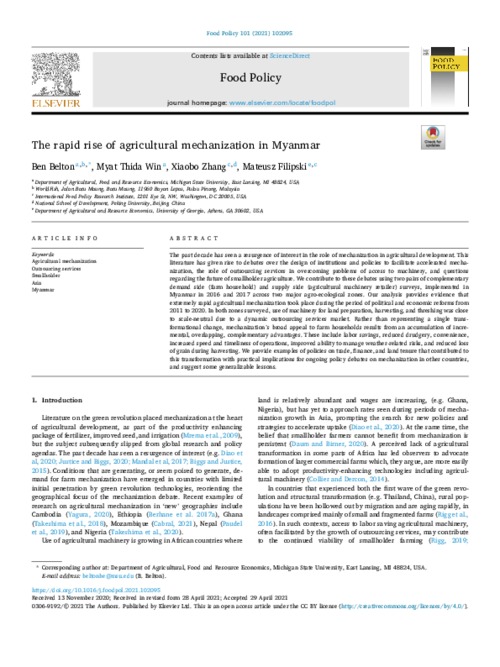The rapid rise of agricultural mechanization in Myanmar

The past decade has seen a resurgence of interest in the role of mechanization in agricultural development. This literature has given rise to debates over the design of institutions and policies to facilitate accelerated mechanization, the role of outsourcing services in overcoming problems of access to machinery, and questions regarding the future of smallholder agriculture. We contribute to these debates using two pairs of complementary demand side (farm household) and supply side (agricultural machinery retailer) surveys, implemented in Myanmar in 2016 and 2017 across two major agro-ecological zones. Our analysis provides evidence that extremely rapid agricultural mechanization took place during the period of political and economic reforms from 2011 to 2020. In both zones surveyed, use of machinery for land preparation, harvesting, and threshing was close to scale-neutral due to a dynamic outsourcing services market. Rather than representing a single transformational change, mechanization’s broad appeal to farm households results from an accumulation of incremental, overlapping, complementary advantages. These include labor savings, reduced drudgery, convenience, increased speed and timeliness of operations, improved ability to manage weather-related risks, and reduced loss of grain during harvesting. We provide examples of policies on trade, finance, and land tenure that contributed to this transformation with practical implications for ongoing policy debates on mechanization in other countries, and suggest some generalizable lessons.
Permalink
Date Available
Type
Publisher
ISSN
0306-9192
Copyright
CC-BY-4.0
Language